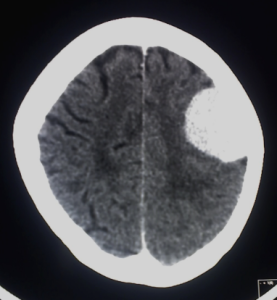In a retrospective cohort with prospective and DNA methylation-based validation Prajjwal Raj Wagle et al. from the Helios Klinikum Erfurt; Jena University Hospital in the Neurosurgery Journal to develop and validate a multiparametric score (MEN-CCVol) based on preoperative patient and MRI characteristics for differentiating WHO grade 2 meningioma/WHO grade 3 meningioma from WHO grade 3 meningioma. The MEN-CCVol score, incorporating six weighted MRI and demographic variables (male sex, edema, necrosis, convexity location, cysts, volume ≥40 cm³), demonstrated moderate predictive ability for detecting higher-grade Intracranial Meningiomas across three cohorts. A cutoff score of ≥3 offered strong Negative Predictive Value (>90%) but suboptimal Positive Predictive Value, indicating utility as a rule-out tool rather than a definitive diagnostic index 1).
Critical Review
This study attempts to address the perennial challenge of preoperatively identifying higher-grade meningiomas using standard clinical and imaging data. The retrospective derivation cohort (n=463) and subsequent validations (n=211, n=18) bolster the methodological robustness, and the use of logistic regression with the Youden-index provides a solid statistical underpinning.
However, critical limitations remain: – Predictive Limitations: The PPV (35-36%) remains too low for actionable high-risk stratification, reflecting the low prevalence of grade 2/3 lesions and modest specificity (~60%). The tool may overly reassure surgeons or misguide surgical aggressiveness in borderline cases. – Score Simplicity vs. Clinical Complexity: By reducing complex radiological patterns to binary point assignments, the model may oversimplify nuanced features that skilled radiologists already integrate subjectively. – Validation Caveats: The DNA methylation cohort, though forward-thinking, includes only 18 cases, making generalizability speculative at best. – Genomic Oversight: Without incorporating any molecular or epigenetic markers beyond location and imaging, the MEN-CCVol score risks being obsolete as integrated diagnosis (radiology + methylation + histopathology) becomes the standard.
Final Verdict
The MEN-CCVol score is a methodologically sound but clinically underwhelming tool. It is best viewed as a supportive adjunct for low-resource settings or preoperative discussions, not a substitute for biopsy or comprehensive imaging review. Its main utility lies in reinforcing the negative predictive value rather than actively guiding escalation.
Takeaway for the Practicing Neurosurgeon: Use MEN-CCVol to reassure low-risk cases, not to dictate management in ambiguous or high-stakes scenarios.
Bottom Line: A statistically valid, clinically cautious tool with limited real-world diagnostic leverage.
Rating: 5.5 / 10
Publication Date: 2025-06-03
Corresponding Author Email: ruediger.gerlach@helios-gesundheit.de
